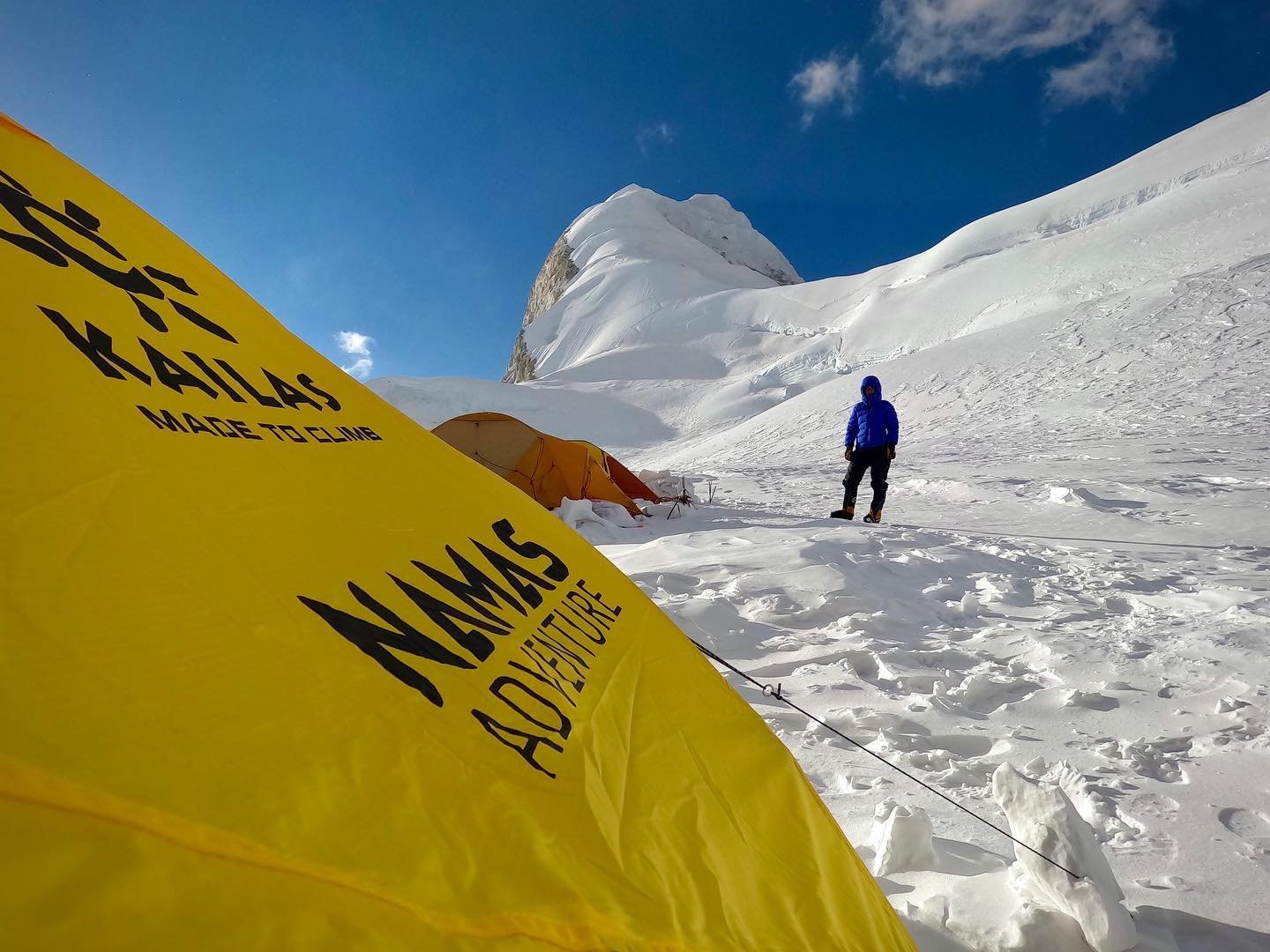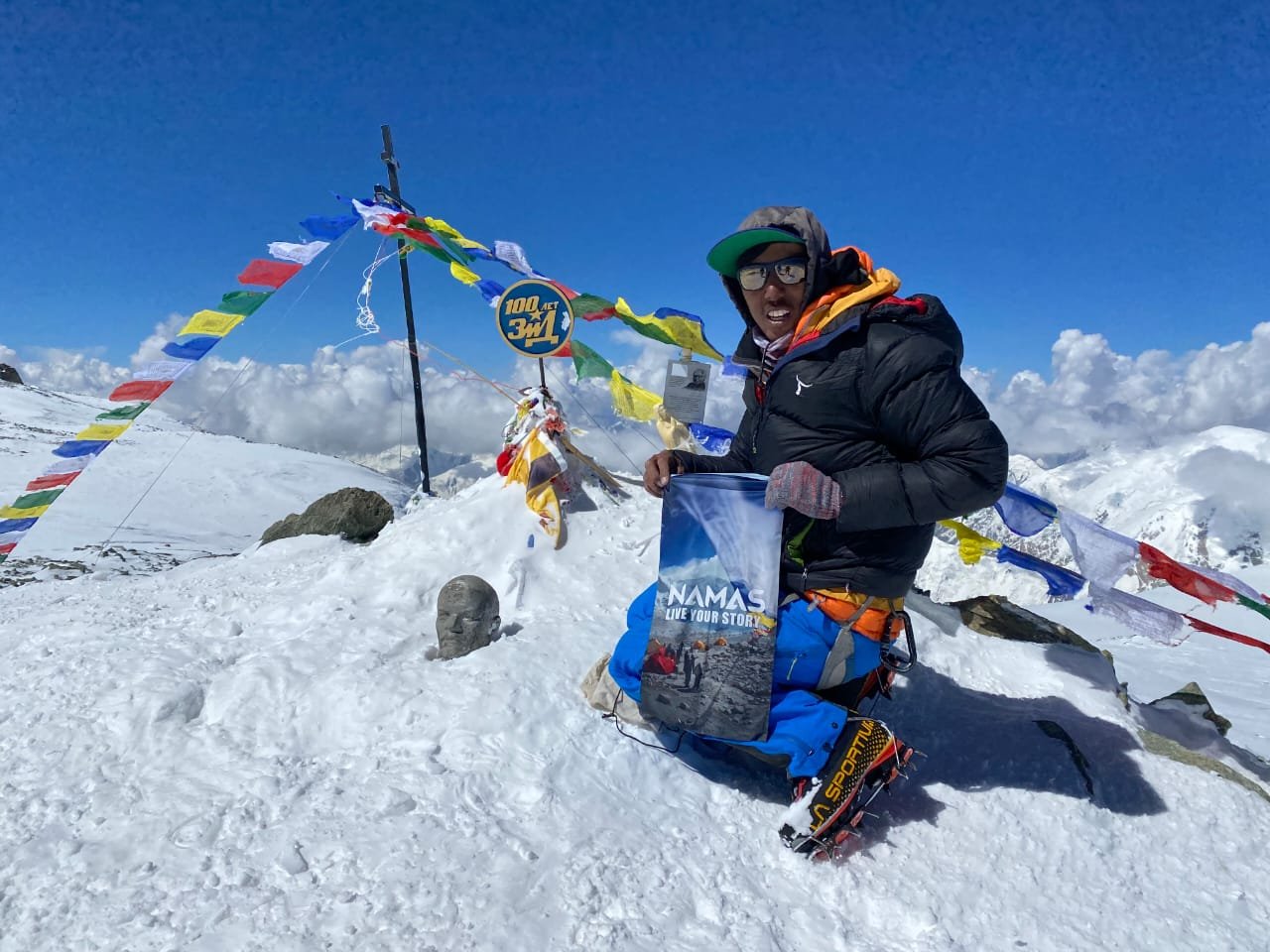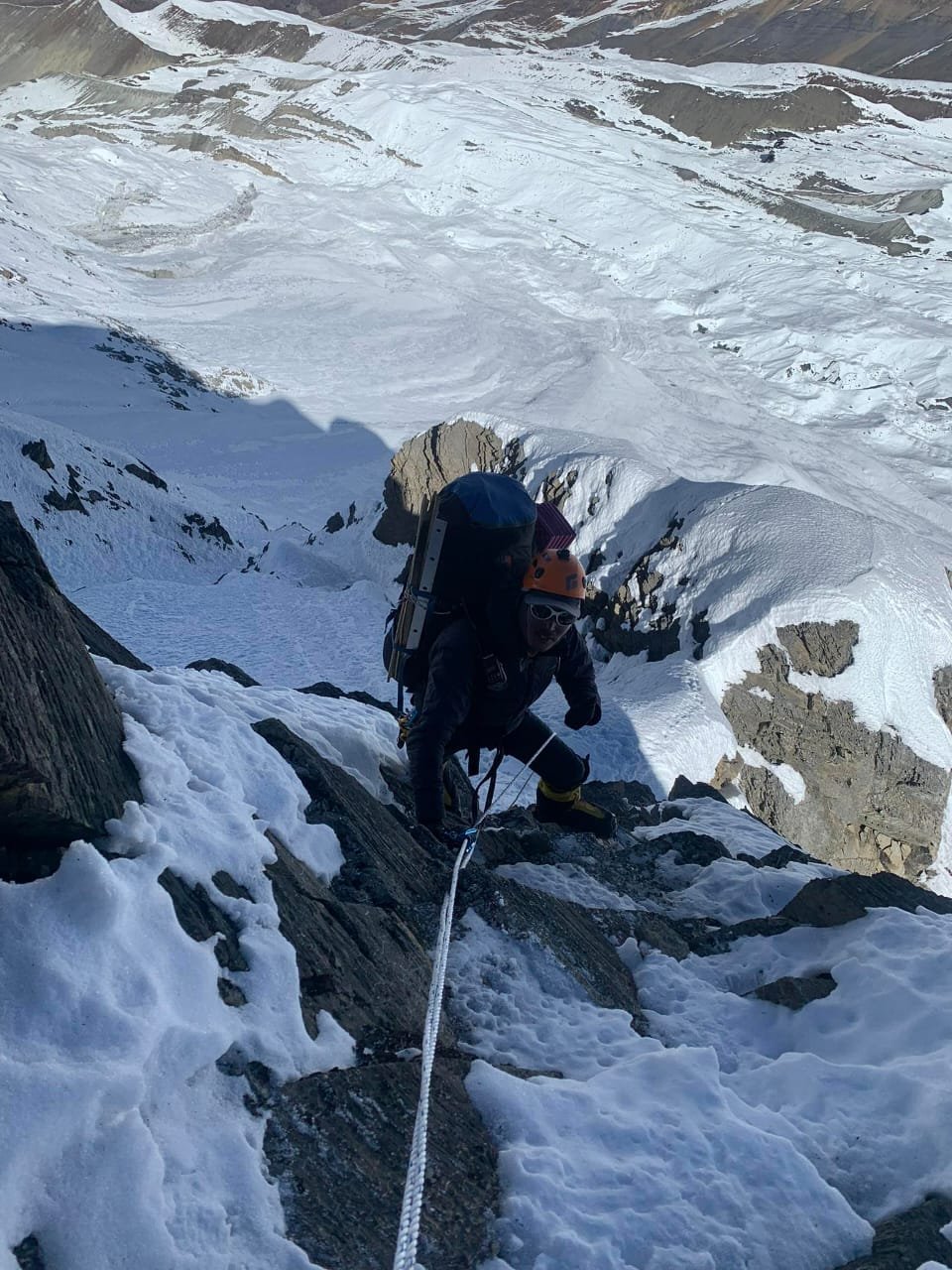Which 7000M mountain peak should I climb? A Guide to Choosing Your next 7000M High-Altitude Adventure: Namas Adventure
With so many amazing options available, it can be difficult to decide which mountain to choose for your next high-altitude expedition. In this blog post, we will provide you with valuable insights and considerations to help you make an informed decision and select the perfect 7000M mountain peak for your climbing aspirations.
The first and foremost is to check your past climbing Experience and Skill Level: Before embarking on any high-altitude expedition, it is crucial to assess your climbing experience and skill level. While 7000M peaks are generally less demanding than their 8000M counterparts, they still require a solid foundation of mountaineering skills and high-altitude experience. Consider factors such as previous high-altitude climbs, technical proficiency, and your ability to adapt to extreme environments.
Easy and Safe - 7000er
Himlung Himal 7126M (Highest summit success in Nepal)
Himlung Himal (7126M) is a classic Himalayan expedition known for being one of the easiest and least technical 7000 meter+ mountains to climb (although it should not be underestimated). It has the highest recorded summit success rate (according to the Himalayan Database) compared to other peaks. Himlung Himal is also renowned as one of the safest climbable peaks with fewer technical difficulties. It is located in the same Himalayan belt as other giants like Manaslu and the Annapurna massif, so you can expect stunning views of the surrounding peaks from the summit.
Expedition Highlights
Elevation: 7126M
Difficulty: 4/PD (Alpine grade link)
High camps: 2 to 3 high camps
15 days of climbing
Considered one of the safest, easiest 7000M+ expeditions with the highest recorded summit success in Nepal
Towering at 7,134 meters along the border between Kyrgyzstan and Tajikistan, Lenin Peak presents an excellent introduction to high-altitude mountaineering above 7,000 meters. Considered one of the more straightforward ascents at this elevation range, it serves as ideal preparation for attempting the Himalayan giants to 7500M or 8,000-meter peaks.
Also named Pik Lenin, this expedition begins in the ancient city of Osh in southern Kyrgyzstan, which radiates a palpable sense of history as the country's second-largest city and oldest continuously inhabited settlement. Home to approximately 250,000 residents, Osh's diverse blend of Uzbeks, Kyrgyz, Russians, and Tajiks infuses the architecture, language, and cuisine with rich cultural elements. Much as it did 3,000 years ago along the Silk Road, Osh still serves as a thriving trading hub connecting Central Asia and China. This gateway city marks the start of the journey before venturing into the high mountains.
Expedition Highlights
Elevation: 7134M
Preparatory climb for 7500M or lower 8000M peaks
One of the least technical 7000M mountain
Difficulty: AD/ 4 (Alpine grade link)
High camps: 3 high camps
Can be your first 7000M+ expedition
Mount Nun is the preeminent peak within the Nun Kun massif situated in the mighty Zanskar Range of the Indian Himalayas. This iconic mountain range, nestled in the Leh Ladakh region, contains two eminent peaks: the lofty Mount Nun at 7,135 meters, the highest summit in the area, and its slightly shorter companion, Mount Kun at 7,077 meters.
A successful ascent of Mount Nun presents ambitious climbers with a prime opportunity to garner invaluable high-altitude mountaineering skills on a classic Himalayan expedition, paving the way for future ascents of even more demanding 7,500 meter or 8,000 meter giants.
Expedition Highlights
Elevation: 7135M
Difficulty: AD/4 (Alpine grade link)
High camps: 3 high camps
12 days of climbing
Can be your first 7000M climb
Spantik 7027M, the majestic peak in the Karakoram region. This expedition is considered straightforward and less technical and offers an excellent opportunity to challenge yourself at altitudes above 7,000 meters while immersing in the beauty of the mountain area, its warm-hearted people, and its captivating culture. With a well-organized expedition, Spantik provides an affordable and rewarding climbing experience, making it a fantastic choice for mountaineers seeking both adventure and cultural exploration. Don't miss the chance to conquer this stunning peak and create unforgettable memories in the enchanting Karakoram.
Expedition Highlights
Elevation: 7027 M
Difficulty: AD/4 (Alpine grade link)
High camps: 3 high camps
15 days of climbing
Can be your first 7000M climb
Baruntse Peak is another attainable 7,000-meter summit in the Himalayas. This expedition is slightly technical and challenging climb compared to the above-mentioned expeditions. Situated amongst giants like Lhotse, and Makalu, Baruntse lies embedded within a stunning panorama of jagged Himalayan peaks. Its accessibility provides climbers with an unparalleled opportunity to develop critical mountaineering skills and high-altitude experience to prepare for future ascents of more demanding summits.
Expedition Highlights
Elevation: 7129M
Difficulty: 4/PD (Alpine grade link)
High camps: 2 to 3 high camps
15 days of climbing
Safe, challenging, and technical sections. Definitely an epic climb
Technical and Challenging 7000er
Annapurna IV 7525M (Prepare for Everest)
Annapurna IV presents the ideal mountaineering objective for climbers seeking a balance of challenge and relative safety. Part of the mighty Annapurna range in Nepal, Annapurna IV lies between the taller Annapurna II (7,937m) to the west and Annapurna III (7,555m) to the east. The established route up Annapurna IV poses fewer objective hazards and is a relatively semi-technical ascent compared to its neighbors. Of the Annapurna peaks (I, II, III, IV, and Gangapurna), Annapurna IV is considered the least dangerous and technically demanding. Despite its accessible profile, this mountain sees far less traffic than other regional giants. For climbers pursuing a balance of adventure and prudent risk, Annapurna IV stands out as an excellent choice.
Expedition Highlights
Elevation: 7525M
Preparatory climb for Everest or other 8000M expedition
Difficulty: 4/D (Alpine grade link)
High camps: 3 high camps
21 days of climbing
Challenging, and technical expedition. Should not be your first 7000er climb.
Pumori 7161m
Mount Pumori will test climbers' endurance and technical skills, though the rewards overwhelmingly compensate for the required effort. Part of the Mahalangur Himal section of the Himalayan range, Pumori lies between the Nangpa La Pass and Arun River, surrounded by giants like Everest, Lhotse, Makalu and Cho Oyu. Considered a technically demanding expedition, Pumori requires climbers to have sufficient high-altitude experience and fitness. Due to exposed ridges and several avalanche-prone sections, small groups are ill-advised. Instead, an adequately sized team is needed to establish ropes and navigate tricky passages. With relentless steepness testing both physical and mental reserves, Pumori lures only the most determined risk-takers equipped with seasoned technical expertise. For those up for the challenge, Pumori promises immense satisfaction in conquering one of the region's toughest peaks.
Expedition Highlights
Elevation: 7161M
Preparatory climb for Everest or other 8000M expedition
Difficulty: 4/E (Alpine grade link)
High camps: 3 high camps
18 - 20 days of climbing
Challenging, and technical expedition. Should not be your first 7000er climb.
With careful evaluation of your skills, experience, risk tolerance, and personal goals, you can identify the ideal 7000M mountain for your next high-altitude expedition. Do your research, inquire and consult with our team, build up your fitness, prepare your gear, and make sure you join a responsible, skilled team. The thrills of standing atop one of these iconic peaks make all the rigorous training and planning worthwhile. Whichever incredible mountain you choose, cherish and be prepared for a life-changing adventure amid some of the most dramatic landscapes on Earth. With the right preparation and positive mindset, you will return home with memories to last a lifetime.
Let’s welcome you to our yearly departure team and scale to the top of these mountains while making this an epic experience of a lifetime. Our team is ready to hear from you and help you achieve your dream adventure.
Namas Adventure Team
Live Your Story
Technically challenging commercial peak expeditions below 8000M to climb in Nepal - Namas Adventure
Scrambing on vertical uneven rocky section, Ama Dablam Expedition
For climbers seeking a technically challenging commercial peak climbing expedition in Nepal, we have compiled a list of amazing expeditions. By no means are these expeditions suitable for beginner/Intermediate level climbers. This one is for the pure grit lovers who want to enjoy, suffer, test their skills, and experience type 2 fun in the remote Nepalese Himalayan peaks.
Most commercial expedition teams avoid super technical routes but with some mountains, you just can’t find a way around it. The only way to accomplish the expedition is to put your technical climbing skills to the test. These expeditions require climbers to have all the necessary skills for technical climbing. For the sake of clarity, all commercial expedition does have a fixed rope system in place, unless all the team members want to go alpine-style without the assistance of a fixed rope. Fixed-line ropes are there for safety and assistance.
Skills such as climbing 70 - 90 degrees vertical routes, traversing on knife-edge ridges or couloirs, ice climbings skills on verticals, scrambling on rocky sections, being ok on uneven exposed areas, and long abseiling on vertical and vastly exposed sections. This sort of climb is more of an art form combined with pure strength and grit. So now that we have mentioned the level you need to be at, the expeditions mentioned below will give you their fair share of amazing technical climbing challenges.
AMA DABLAM 6810M EXPEDITION
Ama Dablam is our very first recommendation because the summit success rate is relatively higher compared to other peak expeditions on the list. It does have to do with its popularity and many other teams being in the mountain.
Dominating the views of the Khumbu trail, Ama Dablam is picturesque it is this magnificent peak also provides the challenges of climbing a technical peak expedition. Ama Dablam is the third most peak expedition permit that is issued every year. With Autumn being 90% of the permit issued, if you want to see very few climbing teams then spring climb should be your choice. This one is a must for all mountaineering enthusiasts.
Ama Dablam expedition Difficulty
Grading (Alpine/Fitness): TD / 5 (click for more grading Infos)
Rock climbing grade: 5.4 to 5. 9
Mixed climbing difficulty: M2 - M3
CHOLATSE 6440M EXPEDITION
Cholatse expedition is considered a step up or technically challenging mountain compared to the Ama Dablam expedition. This towering 6640M peak sits right between Gokyo valley and Everest. Do not underestimate the peak because it does now tower above 6500M. The never-ending knife-edge ridge sections above 6000M and climbing on the super exposed mixed section are not to be taken lightly. These types of expeditions are more for the alpinist nature who loves the art of alpine climbing and perseverance.
Cholatse expedition Difficulty
Grading (Alpine/Fitness): TD / 5 (click for more grading Infos)
Rock climbing grade: 5.4 to 5. 9
Ice Climbing: WI2+
Mixed climbing difficulty: M3 - M4
PUMORI 7161M EXPEDITION
Pumori 7161M mountain peak is another technically challenging peak to climb in the Everest region. Pumori is another mountain that dominates the view during trekking or climbing in the Everest region. Climbing via the South East Ridge route, the route is wildly exposed with several exposed crux at higher altitudes. Climbers wanting to take on the challenges of the Pumori peak expedition should not take it lightly and previous climbs of extreme altitude technical climbs are a must.
Since it is located opposite to Everest, Lhotse and Nuptse south face the events on the other side of the mountain cannot go missing. Some Everest teams use Pumori an acclimatization peak.
Pumori 7161M expedition difficulty
Grading (Alpine/Fitness): TD / 5 (click for more grading Infos)
Rock climbing grade: 5.4 to 5. 9
Mixed climbing difficulty: M3- M4
Want to plan Pumori 7161M Expedition with the Namas Adventure team? Email us at - bookings@namasadventure.com. Once we form enough team with 4+ members we can start planning this expedition.
We will add more expeditions of such types as we explore these types of climbing expeditions.
Explore more. Go.
Live Your Story




























